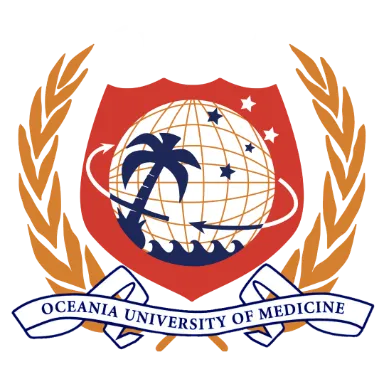Recently, the conversation surrounding diversity in healthcare has gained traction. While traditionally the medical field has been critiqued for its lack of diversity, we are beginning to see a shift toward more inclusive practices. Diversity, whether in terms of race, ethnicity, gender, socioeconomic background, or cultural identity, plays a critical role in shaping healthcare delivery, which must begin at the medical school level if it is to be successful. This blog post explores the importance of diversity and cultural competency in medical education and some of the programs in place at Oceania University of Medicine (OUM) to ensure that its graduates enter their medical communities striving for more equitable patient outcomes.
Building Cultural Awareness May Begin With Acceptance Letters
Historically, medical curricula and training programs have often been tailored to a relatively homogenous group of students, often not reflecting the diversity of the populations they will eventually serve. This lack of representation can limit a physician’s ability to understand the unique needs of a diverse patient group.
Luckily for OUM students and graduates, that “representation” is a given, built into its ecosystem from day 1 of matriculation.
From its inception in 2002, OUM has been a student body of non-traditional students:
- An average age ranging, over the years, from 35 years old to 40+,
- Many with a longstanding desire to study medicine,
- Many amid a very successful first-career at the time they enter medical school, some with nearly 20 years of experience,
- Having already earned advanced degrees — Master’s degrees, Doctorates, and Graduate Diplomas/Certificates, and
- While our students live primarily in Australia, Canada, New Zealand, Samoa, and the US, they come from 22 different birth countries.
“When students from different racial, ethnic, gender, and socioeconomic backgrounds come together, they bring a variety of perspectives that can really enrich learning,” says George Usufono Leao Tuitama, MBBS, Post-Grad Diploma in Mental Health, OUM Dean for Samoa, American Samoa, Aotearoa New Zealand, and the Asia Pacific (pictured). “These perspectives help broaden the curriculum and encourage a patient care approach that is more sensitive to the experiences and needs of different communities.”
Additionally, diversity in the classroom fosters critical thinking and problem-solving skills. Medical students who are exposed to a range of perspectives and experiences are better prepared to adapt to real-world challenges. They are also more likely to be empathetic, aware of their biases, and attuned to the diverse needs of their future patients, which ultimately improves patient care.
Research has shown that minority patients often feel more comfortable when treated by doctors who look like them or share similar cultural experiences. Medical practitioners who reflect the diversity of the populations they serve are also more likely to consider factors such as language barriers and cultural beliefs.
Fostering Cultural Competency Through a Required Rotation Abroad
In an increasingly globalized world, healthcare providers must be equipped to interact with patients from a wide range of cultural backgrounds. Cultural competency is essential for ensuring that healthcare professionals are able to provide care that is not only medically effective, but also respectful and sensitive to patients’ beliefs and practices.
All OUM students train in the University’s home country of Samoa, completing a required four-week rotation at Tupua Tamasese Me’aole (TTM) Hospital, its primary teaching facility.
“A lot of medical schools will teach cultural competency in the classroom. But actually being immersed into another culture gives you a level of cultural competency, not only for one culture that is very different from yours, but by also providing a new way to look at things and to examine your own assumptions,” says Associate Professor Nicolette McGuire, PhD, OUM’s Associate Dean for Student Engagement (pictured). “Our Samoa rotation gives students hands-on experience to be able to apply cultural competency in a medical context that you don’t have at many medical schools.”
And students sing the rotation’s praises.
“The rotation I did in Samoa was the best thing I’ve ever done. You see things and treat things you will likely never see again,” says Marika Stubbs, MD, OUM Class of 2018, who practices in Aotearoa New Zealand. “It is a unique environment that offers amazing hands-on experience that will help you with all your other rotations,” she adds.
Australian student Caroline Harris completed a Pediatrics rotation at TTM Hospital this year.
“The lab was closed for a week while I was rotating, so critical thinking skills were really mobilized because bedside clinical diagnosis was required, going on just symptoms and history with no labs,” says Caroline. “The experience really adds something to your clinical learning, and there’s a lot of cultural competency you can also pick up which are skills much needed in the workplace. So, yes, a big ‘thumbs up’ from me for the Samoa rotation,” she adds.
Diversity in medical education is about more than fairness — it’s a crucial component in ensuring students are taught to provide high-quality, patient-centered care while building invaluable cultural awareness. By embracing diverse perspectives, the future of academic medicine will benefit from an enhanced learning environment, improved patient outcomes, and a more inclusive healthcare system.





